Eric Swenson’s Septic System Blog
All photos by Jennifer Wilson-Pines
One of the organizers of the March 25 Cesspool and Septic conference and subsequent inspector training course was Eric Swenson, Executive Director of the inter-municipal Hempstead Harbor Protection Committee. When the criteria for candidate homes for inspections was discussed by the organizers, Eric realized that his home in Oyster Bay, fairly close to Long Island Sound, seemed like a good candidate. What follows below is Eric’s blog relating what it is like to have a group of professionals inspect your home septic system.
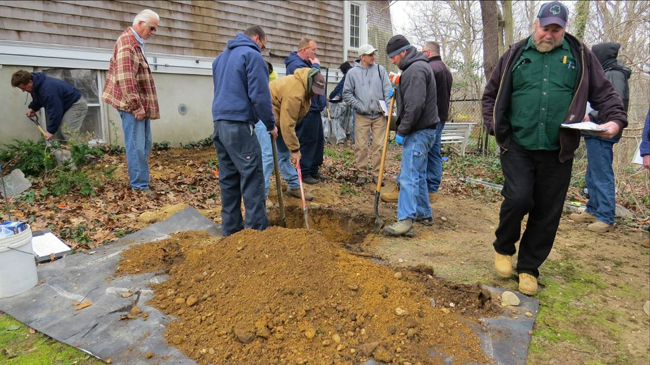
Eric Swenson (in red plaid) watches as the septic system inspection team locates his 14-year old septic system.
I had put in a new system that met code requirements 14 years ago, and knew where the system was but had never had it inspected or pumped out. I realized that I am exactly the kind of person that I was trying to convince to maintain their system and that I should practice what I preach. When the committee selected my system for inspection, I was honestly a little nervous about what I’d find after 14 years.
I figured that I’d save the group time and find the manhole of the system. After spending nearly an entire Sunday digging in the area where I remembered the system being and not finding it, I then dug around the foundation looking for the pipe coming through and could not find that either. It was thus up to the University of Rhode Island team to find it. They found it in about 20 minutes using an electronic probe snaked through the line through a cleanout port in the house. It was literally a few inches from where I’d been looking.
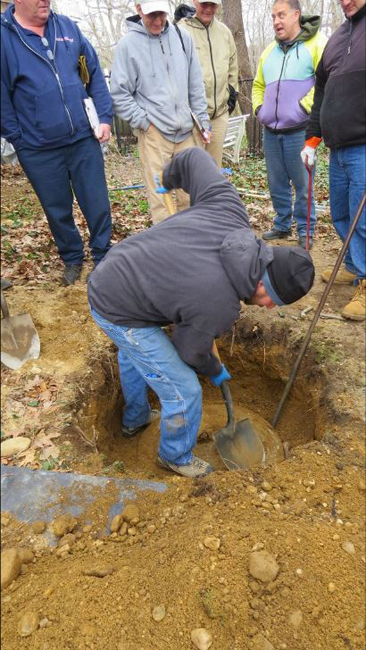
Close up of finding the tank cover
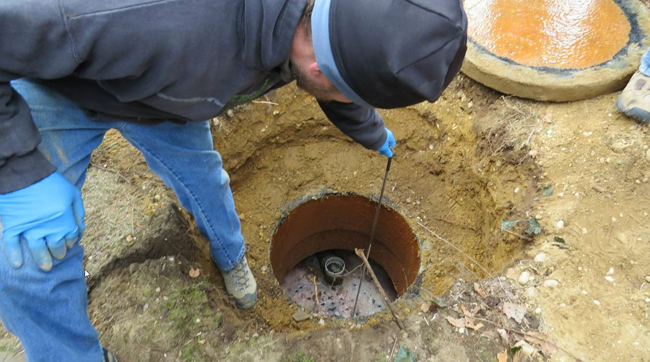
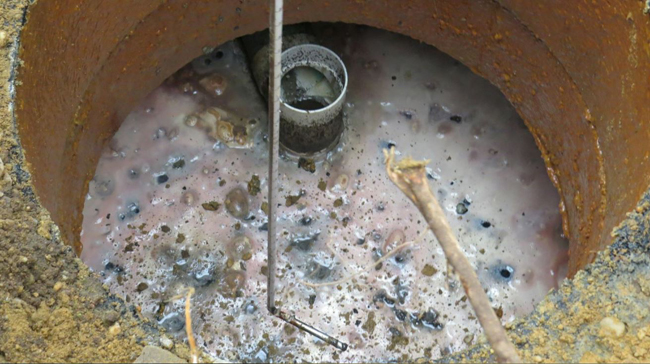
During the inspection, the manhole was removed and a hook-like device was pushed through the top of the liquid to gauge the thickness of the oily layer (called “scum cake”) on the top (
As seen in two photos above). There was less than an inch – a very small amount. Next, a long clear tube was carefully inserted until it could not be lowered any further (
As seen in the first set of three photos below). It was then removed and the tube revealed both the height of the liquid in the tank and the level of sludge in the bottom. Again, there was very little sludge, especially after 14 years (
The second set of three photos below shows liquid in tube). It was then discovered that there was an interior “baffle” in the tank which essentially divided the tank in half. One half was the influent half and the other was the effluent half. We had just inspected the effluent half. From here, the waste flows to a “drainage pool” consisting of piled cesspool rings that recharges the treated septic wastes into the soil.
first set of photos cited above ...
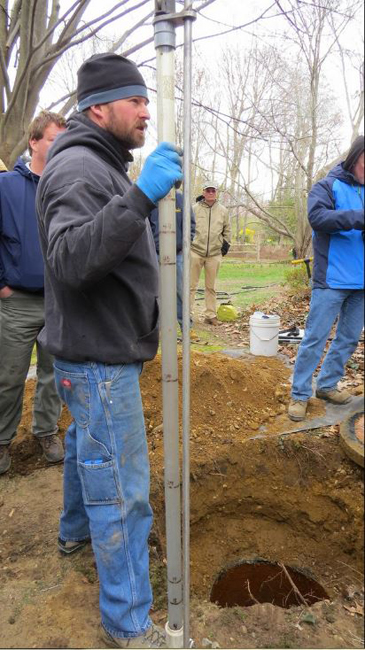
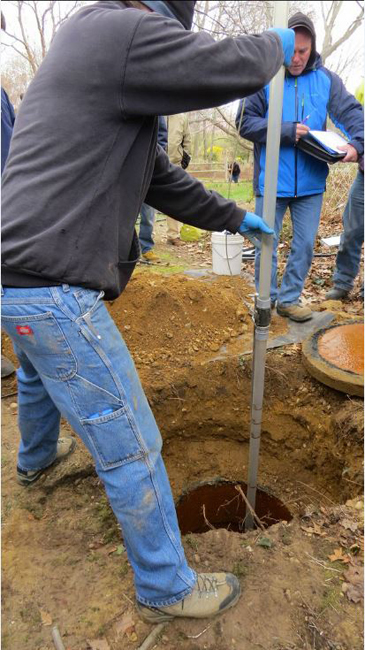
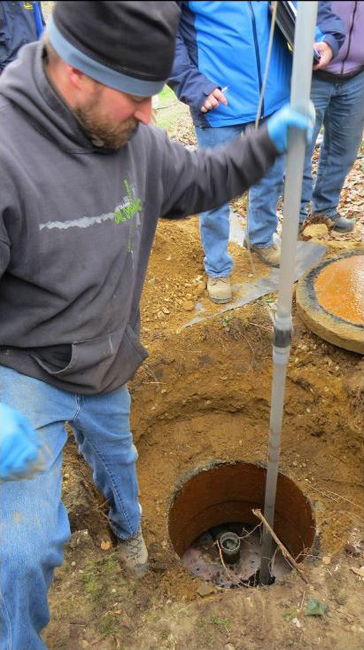 second set of photos cited above ...
second set of photos cited above ...
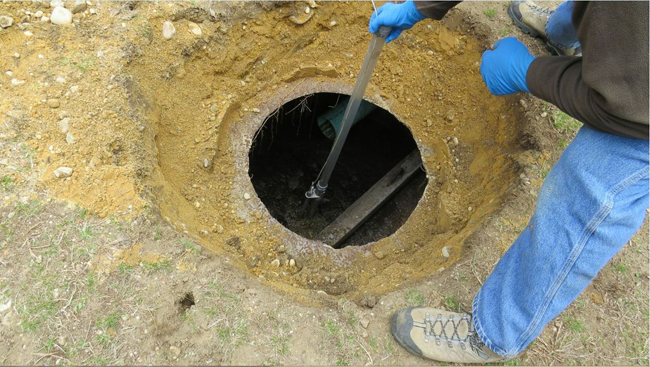
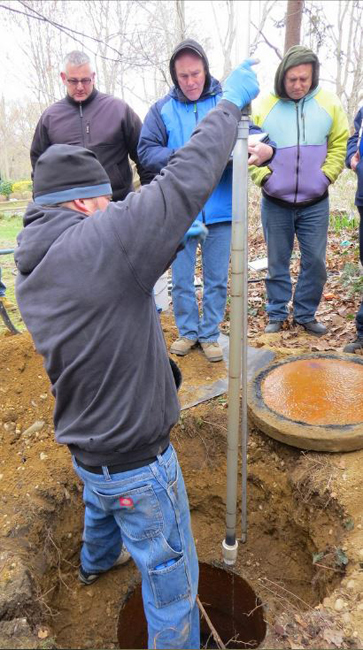
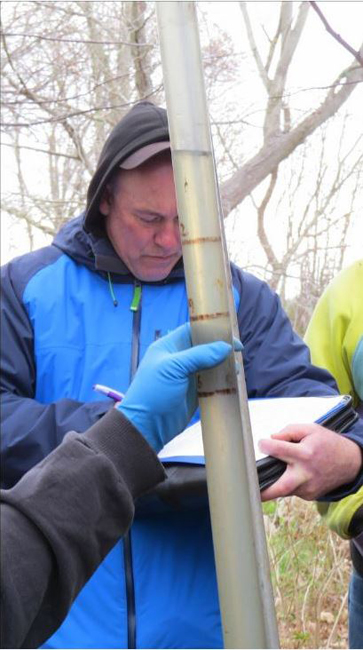
The team did not have the time to find and dig up the access manhole to the influent half of the tank so that will have to be done at a later time. I am confident that the tank is functioning as it was designed. If the first half of the tank was not breaking down the wastes, the wastes would have overflowed into the effluent half and we would have seen it.
I also took the two-day certification course myself. I found it very thorough and very interesting. The instructors taught us the science, the math, the various technologies and the practicalities of septic systems, their inspection and their maintenance. I am glad that I took the course.
Editor’s Note: After working on Eric’s septic system, the inspection team went to another residence in nearby Bayville. After uncovering the manhole to this system, it was very clear that it was not nearly as effective in breaking down wastes as evidenced by the photos!
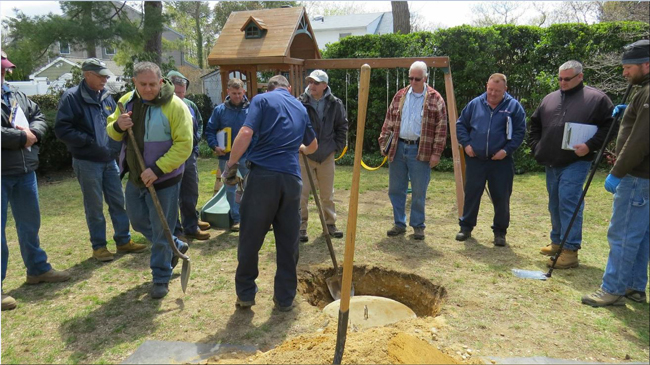
Workers finishing—but actually starting House 2
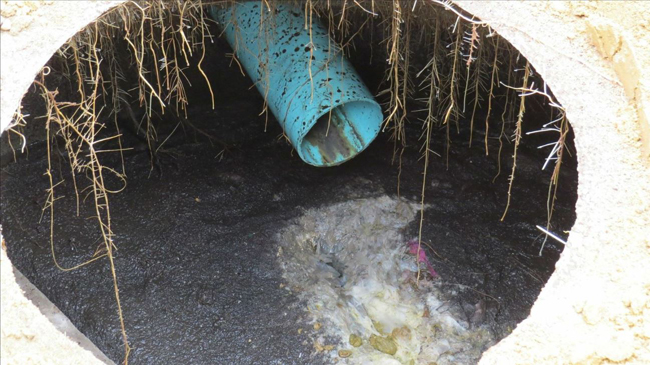
This set of three photos (one above, two below) show drainage pool—this is in House 2

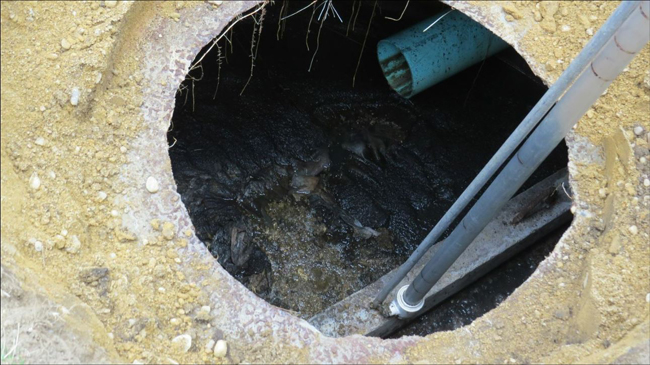
Thanks to Paul Deorsay, Friends of the Bay (second from left with green cap), George Loomis, workshop speaker from URI (center just left of shovel in blue cap), Eric Swenson, Hempstead Harbor Protection Committee (red plaid), Joseph Garbarino, Long Island Liquid Waste Association (blue jacket), the tech crew from L & J Cesspool, and especially Jennifer Wilson-Pines, Manhasset Bay Protection Committee, for taking these up close and personal pictures of something we all have to deal with, but rarely see!